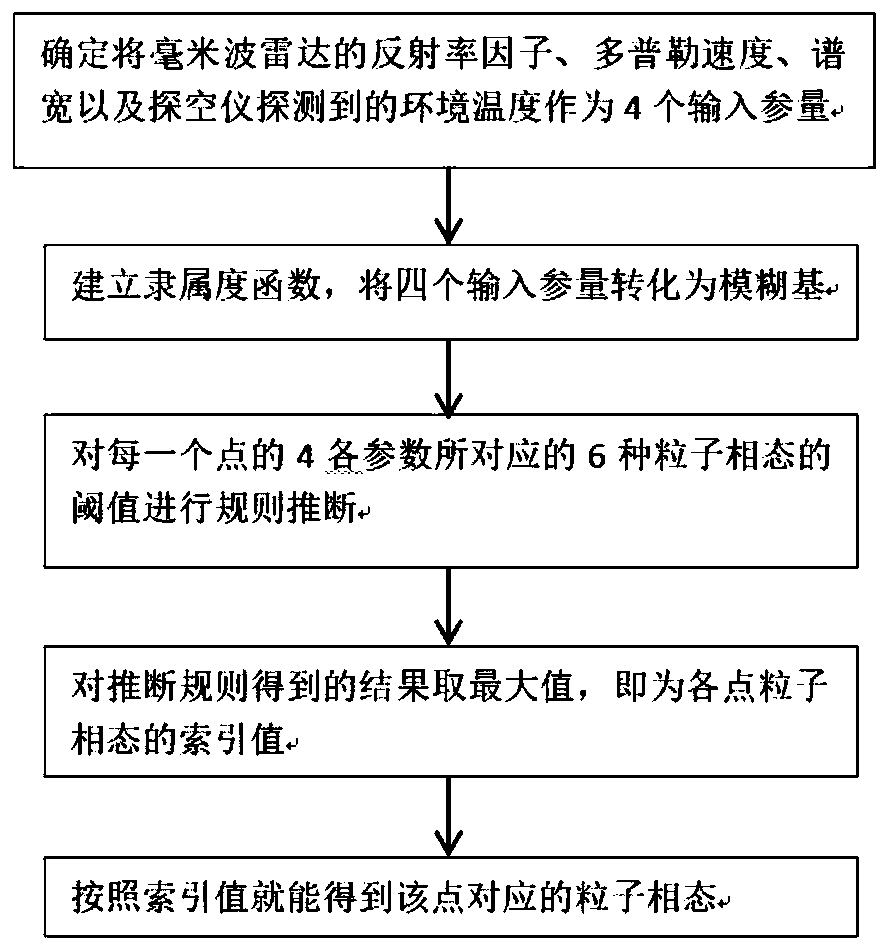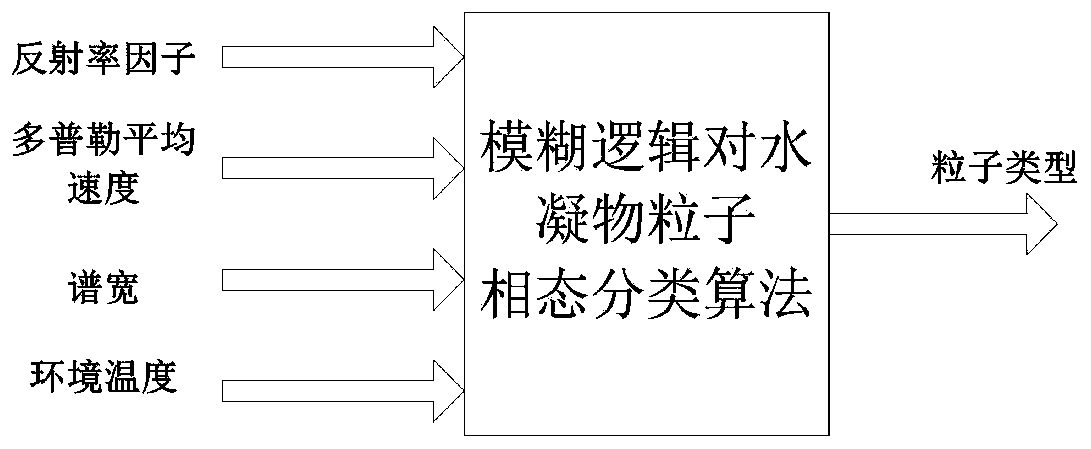Fuzzy logic method meteorological particle identification method based on mixed-programming technology
A technology of fuzzy logic and particle recognition, which is applied in character and pattern recognition, climate sustainability, radio wave reflection/reradiation, etc. It can solve the problems of large-scale decision trees, large uncertainties, and long rule lengths. Achieve the effect of improving calculation speed, improving efficiency and reducing duplication of work
- Summary
- Abstract
- Description
- Claims
- Application Information
AI Technical Summary
Problems solved by technology
Method used
Image
Examples
Embodiment 1
[0037] This embodiment adopts a fuzzy logic method meteorological particle identification method based on mixing technology provided by the present invention, such as figure 1 shown, including the following steps:
[0038] Step 1: Fuzzification, read the reflectivity factor, Doppler velocity, spectral width data in the millimeter-wave radar data, and temperature data in the radiosonde data through Matlab, and then use the read data as four input parameters, and respectively The membership function is established, and the input parameters are transformed into fuzzy bases; the millimeter-wave radar detection data are nc data files; radiosonde detection data are dat data files. Among them, the membership function is as follows:
[0039]
[0040] Step 2: Rule derivation, after the establishment of the membership function and the fuzzification of the four input parameters, the snow, ice, mixed phase, liquid water, drizzle, and rain corresponding to the input parameters of each ...
Embodiment 2
[0047] Present embodiment adopts a kind of fuzzy logic method meteorological particle recognition method based on mixing technology provided by the present invention, comprises the following steps:
[0048] 1) Write the relevant M file of fuzzy logic algorithm in Matlab, read in radar data, carry out data recognition, take output image as recognition result, and this .M file is packaged into a JAR package, i.e. a .JAR file;
[0049]2) Create a Java project, edit a main window class MainFrame, set the properties of the form itself in the construction method of the form class, and initialize related components inside the window, such as labels (JLabel), text boxes (JTextField), buttons (JButton), etc., create a sub-window for displaying the meteorological particle recognition effect map;
[0050] 3) Build the JAR package obtained by Matlab and the JavaBuilderAPI provided by the official website into the project compilation environment and copy it to the lib directory in the proj...
Embodiment 3
[0085] This embodiment adopts a fuzzy logic method meteorological particle identification method based on mixing technology provided by the present invention to identify meteorological particles, including the following steps:
[0086] Step 1. The relevant variables in the millimeter-wave radar data file are stored in the form of an array, and the relevant variables of the millimeter-wave radar are read through Matlab, which are "time (time)", "rang (height)", "Zh (reflectivity factor)", "v (Doppler velocity)", "width (spectral width)"; read the temperature data of the radiosonde. Among them, millimeter-wave radar "Zh (reflectivity factor)", "v (Doppler velocity)", "width (spectral width)" and radiosonde temperature "T (temperature)" are the four inputs of the fuzzy logic algorithm Parameters; "time (time)" and "rang (height)" are used to establish a coordinate system and output a recognition image. Matlab has a built-in function for reading radar data nc files and sounding t...
PUM
 Login to View More
Login to View More Abstract
Description
Claims
Application Information
 Login to View More
Login to View More - R&D
- Intellectual Property
- Life Sciences
- Materials
- Tech Scout
- Unparalleled Data Quality
- Higher Quality Content
- 60% Fewer Hallucinations
Browse by: Latest US Patents, China's latest patents, Technical Efficacy Thesaurus, Application Domain, Technology Topic, Popular Technical Reports.
© 2025 PatSnap. All rights reserved.Legal|Privacy policy|Modern Slavery Act Transparency Statement|Sitemap|About US| Contact US: help@patsnap.com



